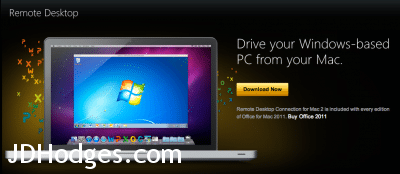Microsoft Remote Desktop For Mac 10.8

- Microsoft Remote Desktop Connection Client For Mac Os X 10.8
- Microsoft Remote Desktop Connection For Mac Os X 10.8.5
- Windows Remote Desktop For Mac
- Microsoft Remote Desktop For Os X 10.8
Previous discussions regarding Remote Desktop 10 Beta for Mac were buried in an earlier post Microsoft Update 1805 Breaks Remote Desktop for Windows but Remote Desktop for Mac has now been officially released on the App Store. Fortunately, it’s very easy to connect to remote Windows PCs and servers on Mac OS X. Thanks to Microsoft’s Remote Desktop Connection (also called RDC), full RDP support is native on OS X.The program is available as a free download from Microsoft.
. Note • Curious about the new releases for the macOS client? Check out • The Mac client runs on computers running macOS 10.10 and newer. • The information in this article applies primarily to the full version of the Mac client - the version available in the Mac AppStore. Test-drive new features by downloading our preview app here:.
Get the Remote Desktop client Follow these steps to get started with Remote Desktop on your Mac: • Download the Microsoft Remote Desktop client from the. (If you skip this step, you can't connect to your PC.) • Add a Remote Desktop connection or a remote resource. You use a connection to connect directly to a Windows PC and a remote resource to use a RemoteApp program, session-based desktop, or a virtual desktop published on-premises using RemoteApp and Desktop Connections.
This feature is typically available in corporate environments. What about the Mac beta client? We're testing new features on our preview channel on HockeyApp.
Microsoft Remote Desktop Connection Client For Mac Os X 10.8
Want to check it out? Smith programs for mac os x. Go to and click Download. You don't need to create an account or sign into HockeyApp to download the beta client.
Microsoft Remote Desktop Connection For Mac Os X 10.8.5
If you already have the client, you can check for updates to ensure you have the latest version. In the beta client, click Microsoft Remote Desktop Beta at the top, and then click Check for updates. Add a Remote Desktop connection To create a remote desktop connection: • In the Connection Center, click +, and then click Desktop. • Enter the following information: • PC name - the name of the computer. • This can be a Windows computer name (found in the System settings), a domain name, or an IP address.
• You can also add port information to the end of this name, like MyDesktop:3389. • User Account - Add the user account you use to access the remote PC. • For Active Directory (AD) joined computers or local accounts, use one of these formats: user_name, domain user_name, or user_name@domain.com. • For Azure Active Directory (AAD) joined computers, use one of these formats: AzureAD user_name or AzureAD user_name@domain.com. • You can also choose whether to require a password. • When managing multiple user accounts with the same user name, set a friendly name to differentiate the accounts.
• Manage your saved user accounts in the preferences of the app. • You can also set these optional settings for the connection: • Set a friendly name • Add a Gateway • Set the sound output • Swap mouse buttons • Enable Admin Mode • Redirect local folders into a remote session • Forward local printers • Forward Smart Cards • Click Save. To start the connection, just double-click it. The same is true for remote resources. Export and import connections You can export a remote desktop connection definition and use it on a different device.
Remote desktops are saved in separate.RDP files. • In the Connection Center, right-click the remote desktop. • Click Export.
• Browse to the location where you want to save the remote desktop.RDP file. Use the following steps to import a remote desktop.RDP file. • In the menu bar, click File > Import. • Browse to the.RDP file. • Click Open. Add a remote resource Remote resources are RemoteApp programs, session-based desktops, and virtual desktops published using RemoteApp and Desktop Connections. • The URL displays the link to the RD Web Access server that gives you access to RemoteApp and Desktop Connections.
• The configured RemoteApp and Desktop Connections are listed. To add a remote resource: • In the Connection Center click +, and then click Add Remote Resources. • Enter information for the remote resource: • Feed URL - The URL of the RD Web Access server.
Windows Remote Desktop For Mac

You can also enter your corporate email account in this field – this tells the client to search for the RD Web Access Server associated with your email address. • User name - The user name to use for the RD Web Access server you are connecting to. • Password - The password to use for the RD Web Access server you are connecting to.
Microsoft Remote Desktop For Os X 10.8
• Click Save. The remote resources will be displayed in the Connection Center. Connect to an RD Gateway to access internal assets A Remote Desktop Gateway (RD Gateway) lets you connect to a remote computer on a corporate network from anywhere on the Internet.
You can create and manage your gateways in the preferences of the app or while setting up a new desktop connection. To set up a new gateway in preferences: • In the Connection Center, click Preferences > Gateways. • Click the + button at the bottom of the table Enter the following information: • Server name – The name of the computer you want to use as a gateway. This can be a Windows computer name, an Internet domain name, or an IP address. You can also add port information to the server name (for example: RDGateway:443 or 10.0.0.1:443). • User name - The user name and password to be used for the Remote Desktop gateway you are connecting to.
